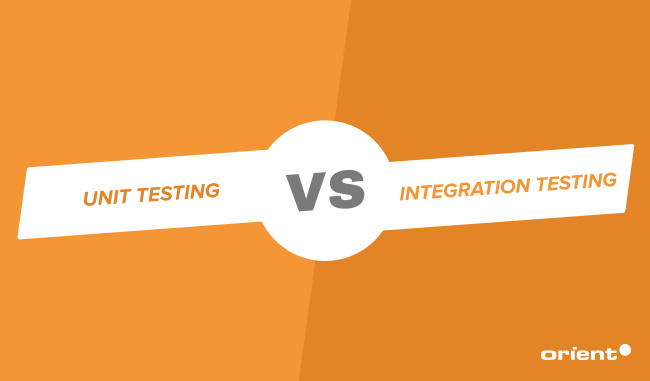
Unit Testing Vs. Integration Testing: How to Tell Them Apart?

Content Map
More chaptersThere are various types of functional testing methods, such as unit testing, regression testing, system testing, acceptance testing, and integration testing. Out of these various testing types, unit testing and integration testing are two essential ones that must be carried out during the software development lifecycle. Here, we are going to clarify the distinction between these two testing types so that you can have a better understanding of their core differences.
Definitions of Unit Testing and Integration Testing
To better understand the difference between unit tests and integration tests, we should have a look at their definitions first.
What Is Unit Testing?
In simple terms, unit testing is one type of software testing method in which an individual unit or a single component of source code is tested in total isolation. The purpose of this process is to validate the individual units so that they work as expected by mocking the interactions with the external dependencies. A unit tested in this testing type can be a function, class, or method. Usually, the developer carries out this task by writing test cases and then running them to check if they return the expected output. Unit testing is often considered the first level of software testing.
Why Unit Testing?
A unit test is important because it helps to identify defects at an early stage of the software development process. Doing so can save a lot of time and effort that would be required to fix these defects later on. Moreover, unit testing also makes the code more reliable and easier to understand. As a result, it reduces the overall cost of development.
Unit testing can be conducted manually or using automated testing tools. Automated tests are more efficient and less time-consuming. Some of the popular unit testing tools are TestNG, JUnit, NUnit, Mockito, PHPUnit, and Selenium. All these tools allow developers to write test codes in the programming language that they are most comfortable with, such as Java.
What Is Integration Testing?
Integration testing, on the other hand, is the software testing method in which software units or modules are tested in a group. The purpose of this process is to validate the communication and interaction between these units and guarantee they work in harmony with each other. Integration testing is often considered the second level of software testing after unit testing.
There are different types of integration testing, each one designed to test a different type of interaction between software units. The most common types of integration testing are:
- Top-down Integration Testing: This type of testing is carried out from the top-level module down to the lower-level modules. It is used to verify that the higher-level modules can communicate with the lower-level modules.
- Bottom-up Integration Testing: With a similar purpose, this type of testing is carried out from the lower-level modules up to the higher-level modules.
- Big-bang Integration Testing: This type of testing involves integrating all the modules at once. Then, they will be tested as an entity.
- Sandwich Integration Testing: As revealed in its name, this type of integration testing is carried out by combining module pairs, which are then tested together.
Why Integration Testing?
An integration test is conducted to check the functional, performance, and load behavior of the overall system. It also verifies if the components function properly when they are integrated with each other. In addition, integration testing helps to identify any gaps in the communication between various components. It also uncovers defects that might not have been detected during unit testing.
Why Do People Mix Up Them?
Unit testing and integration testing have some similarities, which make people confuse one another. Basically, both of them are functional tests to catch errors and bugs early on in the development process. These software testing methods share the common goal of ensuring codebase quality before release, reducing the time for debugging later on and increasing maintainability. They are correlated and play a crucial part in the comprehensive testing strategy of your software development team.
A Detailed Comparison Between Unit Tests and Integration Tests
Although unit testing and integration testing share something in common, it does not mean they are interchangeable. In fact, there are several major differences that set them apart. Perhaps, the detailed comparison below will give you a clearer picture of how these two software testing techniques differ:
- In the unit tests, each software component is tested separately to verify the functionality of a single unit of code. Meanwhile, in integration tests, two or more different modules are combined and tested to assess how they work together.
- Another major thing to distinguish between unit and integration tests is that the unit testing is conducted by developers in the coding phase, while integration testing is typically performed by the test team.
- Unit testing can be executed almost anytime, and the integration tests are done only after that. An integration test has to be run in a rigid order, while a unit test can be run in any order and even simultaneously.
- The errors in unit testing results are easier to be found and fixed compared to the integration errors. On top of that, a unit test is relatively simpler than an integration test. This can explain the reason why an integration test is more costly than a unit test.
- Integration tests use real dependencies, while unit tests mock the interactions with external dependencies.
- Another clear discrepancy between these two functional tests is that unit testing is white box testing, and integration testing is black-box testing.
- Last but not least, unit tests begin with the module specification, while integration tests start with the interface specification. In unit testing, development teams know the internal design of software, while testers don’t in integration tests.
Final Thoughts

In short, unit testing and integration testing are equally important, and they enable error detection and bug fixes early in the development lifecycle. However, they should not be performed one after another. Even though both are functional testing methods with some similarities, there are multiple distinctions between these types of testing, as we outlined in the comparison above. A good understanding of the differences between these two software testing methods is the key to deciding how to use each of them precisely and efficiently.






